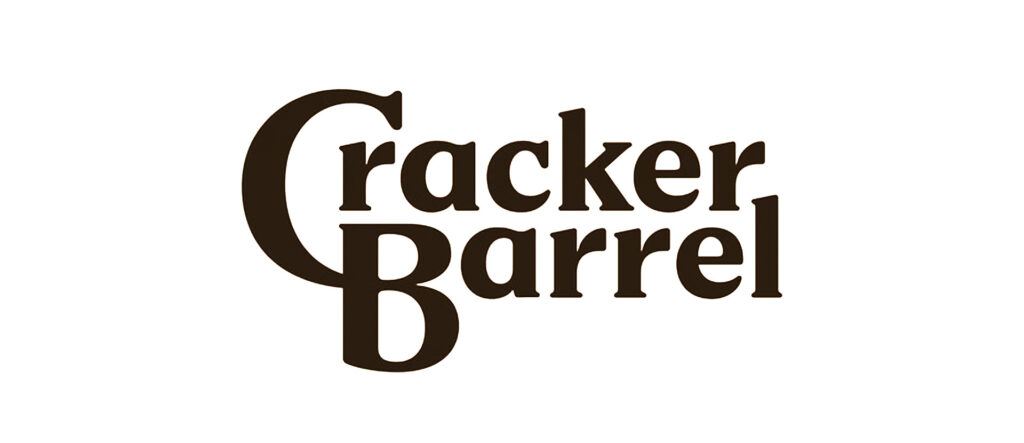
&Barr’s Rebrand
Success Plan
A successful rebrand doesn’t happen by accident.
By: Kim Blaylock, VP Account Service
Jaguar. Google. Walmart. Cracker Barrel. Big names, big moves. Their rebrands over the past year show just how different the outcomes can be. When executed carefully they can reinvigorate a brand and drive growth, but if there are missteps they can backfire and alienate loyal customers.
Cracker Barrel recently rebranded and, due to backlash, has already reverted to their original logo. The new logo was only one piece of their $700 million rebrand, which also included remodeled restaurants with a more contemporary design, menus, and packaged goods. One quote from Cracker Barrel during the past week stuck with me and inspired this blog: “You’ve also shown us that we could’ve done a better job sharing who we are and who we’ll always be.”
Brand refreshes and rebrands happen often and for many reasons, including wanting to appeal to a broader audience as was the case with Cracker Barrel. But the way a rebrand is conducted and rolled out makes all the difference as to its acceptance. It’s a simple process built by research and planning that more people should follow.
Step 1. Determine if a rebrand is really needed.
Many times, a new president or CMO wants to “make their mark” and thus a rebrand commences. This is obviously not a great reason to make a change. For most brands, their marks, tone, messaging, and style elements (typeface, colors, images, design treatments, etc.) represent years of emotional and monetary equity that can’t be replaced. They embody and project a brand’s emotional core and are the foundation for relationships to be built through perceived connections.
If a rebrand is needed due to a company change, market positioning shift, or to secure brand relevance to an expanding audience, be sure that the creative brief is very specific as to the goal and desired result, as well as current and future audience perceptions.
Step 2. Know your current audience and prospective audience
Through research and proprietary intel, understand your audience’s perceptions of your brand – why they use your service/buy your product, and what brand attributes they value. If you desire to reach a new audience, do your research to understand the market potential, and what you offer/can offer that will emotionally and rationally connect with that audience, while not alienating your current audience.
Step 3. Align internal audiences
Are all stakeholders aligned with the brand shift? Your board of directors, shareholders, C-suite? Ensure they are included in discussions about the need for a rebrand and show them the research that proves a rebrand will be successful.
Step 4. Test and prove
Research is your friend. Test your rebranded assets against current and prospective audiences, then refine and retest until you have a brand look and narrative that resonates.
Step 5. Build an airtight, authentic narrative
Take your time to craft the rebrand story that will be released to internal and external audiences, including why there was a need for the rebrand, what audiences felt, and how the rebrand resonated with customers/potential customers when tested with research. Show how the rebrand answered a need and was proven to fulfill that need.
Step 6. Launch using a Communications Cascade™
The delivery of the rebrand launch is about as important as the rebrand itself, as the right messages in the proper order are key to internal buy in, ambassadorship, and external acceptance. Internal audiences should always be in the loop before releasing any information externally. Build a comms cascade that messages internal stakeholders – leadership, board of directors, and staff, and then external audiences including customers and media.
A rebrand is not something to take on lightly. Ensure it’s really needed, and if so, carefully research, message, and roll out the refreshed brand to ensure it will be positively received and grow business.






